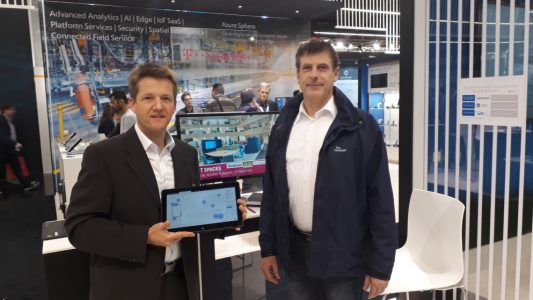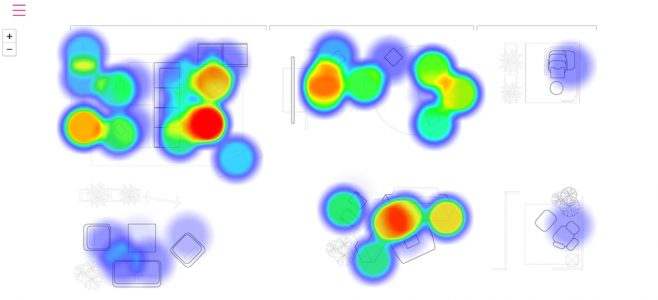Digitalizing building spaces
Issue :
read all articles online
read as pdf
The demand for smart building management systems is growing steadily, since work areas within the company that are not well organized or seldom used are becoming more and more difficult to justify financially.

From left to right: Carsten Roepke, T-Systems Multimedia Solutions GmbH, and Armin Anders, EnOcean GmbH, present Smart Spaces at SPS-IPC Drives 2018.
Smart (office) spaces
The Internet of Things (IoT) makes it possible to create a digital twin, which represents building spaces and work areas in the virtual world. Companies are currently investing heavily in modern, attractive work environments for their staff and in flexible concepts for new ways of working. They want to hold onto their employees for many years to come and, at the same time, ensure high productivity and improve efficiency in their management practices.
Objective and reality
The goal is to optimize the use of space with suitable furnishings that cover ergonomic, social and intellectual aspects. Ideally, employees can make flexible use of the right work environment on a daily basis. Using room booking devices and portals further increases efficiency, and they can also be integrated into indoor navigation systems.
These requirements can also be applied to industrial environments, where the goal is to create the best possible configuration of manual workstations on the shop floor or in cyber-physical systems (human/robot interaction).
On close examination, many decision-makers (HR, production and facility managers) discover that employees often do not use modern work environments as intended, so that the high investment costs do not optimally take effect.
Steelcase, the well-known office furniture supplier, has learned from its customers that on average only 54 percent of the available office space is used. It has been shown that a correlation exists between space organization (actual demand) and the creativity and work motivation promoted by such space.

Heat map of motion data detected with sensors
Identify, analyze, optimize
How does one recognize potential and the need for modification? How does one identify unused space, determine availability in real time, arrange devices and furniture in keeping with their function or collect parameters such as temperature, humidity and CO2 in sensitive work areas?
Using sensors, a “Smart Spaces ecosystem” supplies status data in real time via an IoT gateway to an IoT cloud platform, where the data is analyzed, while a dashboard visualizes the results for decision-makers.
Expectation and benefit
Companies create new forms of added value when they can identify space potential and control it intelligently. This added value can be used as internal services offered within the company itself as well as for visitors or external partners of associated building management services:
– Efficient space utilization
– Higher employee productivity
– Cost control and sustainability
Strong solution partners:
Steelcase produces ergonomic office furniture and develops smart office concepts.
T-Systems configures, integrates and operates customized Smart Spaces solutions.
Microsoft offers the Azure Digital Twins IoT platform, which provides a virtual representation of the physical world with smart modeling of the relationships between people and their environments.
EnOcean provides an interoperable, batteryless wireless standard with self-powered IoT sensors.
New articles in Smart Spaces
Top articles





